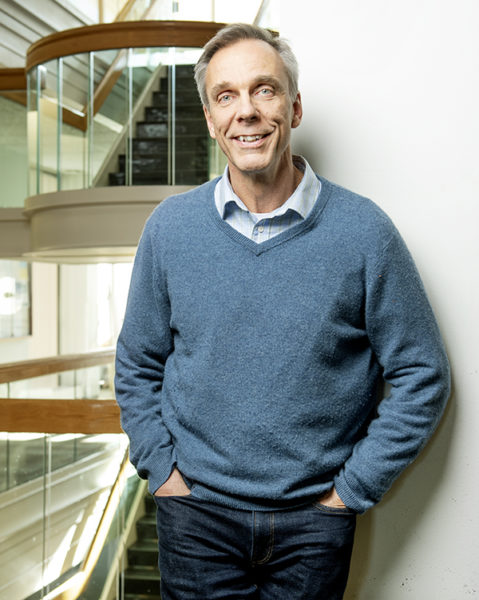Lessons from Training 10,000 Small Businesses

A decade ago, when Goldman Sachs and Babson College embarked on an audacious project to train 10,000 small business owners over 10 years, it seemed like a daunting objective.
Professor of Finance Richard Bliss recalls flying back from Southern California with the Babson team in 2010 after they had trained the first 70 business owners and wondering, “How will we ever get 10,000?”
Ten years later, for everyone associated with the Goldman Sachs 10,000 Small Businesses program, it’s mission accomplished. Through curriculum and support designed and implemented by Babson faculty, who also trained community college teams to deliver the content, the program this year reached its audacious, eponymous goal.
“The number 10,000 is obviously significant,” said Bliss, the program’s National Academic Director. “It’s just tremendously rewarding for us to know the impact that this is having. At the same time, 10,000 is a drop in the bucket in the small business world. The question is, how do you get this to more people?”
Goldman Sachs and Babson are doing their part to answer that question. Just last week, Goldman Sachs announced it is committing an additional $250 million to the 10,000 Small Businesses program, further funding the training and support of small businesses across the country.
Diverse, Direct Impact
The first 10,000 small business owners represent a diverse population. About half are women, and nearly 40% of graduates are people of color (compared with only 17% of all employer small businesses nationwide). Collectively, the small business owners represent $14 billion in revenue and more than 200,000 employees.
“I think that 10,000 is representative of countless small business owners, who by and large don’t have a lot of resources,” Bliss said. “Unfortunately, the last nine months have made very clear how disadvantaged some small businesses are, particularly those owned by people of color.”
The program also has proven to have an immediate impact on the businesses themselves. According to an impact report published by Babson in 2020, 66% of participants saw their revenue increase and 46% added new jobs within six months of completing the program.
“It’s just tremendously rewarding for us to know the impact that this is having. At the same time, 10,000 is a drop in the bucket in the small business world. The question is, how do you get this to more people?”
Professor of Finance Richard Bliss, National Academic Director of the Goldman Sachs 10,000 Small Businesses program
Empowering Entrepreneurs
The most important lesson, Bliss notes, is that all small business owners already are entrepreneurs. Bliss says the Goldman Sachs program helps by giving business owners the basic toolkit and mindset that Babson MBA and even second-year undergraduate students have. It’s the fuel that owners need to accelerate their businesses.
“When you find people who are already entrepreneurs and give them those basic tools,” Bliss said, “they take off.”
That has been especially necessary this year, as small businesses have been dramatically impacted by the pandemic. “I do take some solace in the fact that many of them said they feel what they learned in the program helped them survive the last nine months,” Bliss said. “They had a mindset that was: ‘I can do this. I can find new ways to run my business, I can sort of lead people out of this, or at least through it.’ ”
Power of Peer Learning
Another key lesson is that small business owners don’t have the time or desire to wade through textbooks and economic or marketing theories. They want to take action, backed by theory, and improve their businesses now—or, as the Babson design team labeled it: “Invisible Theory, Practically Actionable, Immediately.”

“By creating a curriculum that’s tremendously hands-on, that’s focused on their businesses, specifically, and then having them work with one another to solve problems,” Bliss said, “it’s really shown me the benefit of peer learning.”
In fact, the faculty member leading the discussion isn’t tasked with opining on a given topic or challenge, even though he or she may be expert. Instead, it’s the collective wisdom of the business owners themselves that makes the program so powerful.
“If you put 40 business owners in a room, you don’t need a professor—you just need someone to facilitate the business owners’ discussion” Bliss said. “I can almost guarantee that somebody in the room solved that problem in reality more recently.”
Effective and Fun
Reflecting on the achievement and the past 10 years, Bliss cites the Babson team—especially the original core that included Professor Emeritus Patricia Greene, Professor Michael Fetters, Professor Emeritus Anne Donnellon and Adjunct Professor Dennis Ceru—for not only making the program work but also making it fun.
“To take on an effort like this over a 10-year period, if you’re not having a good time doing it and with people that you enjoy working with and that you respect, what’s the use?” Bliss said. “So, I think having the right team and having the culture that lets them thrive and do what needs to be done (is important). I could not do this without great people around me.”
The impact of the Goldman Sachs-Babson College partnership on the 10,000 Small Businesses program is undeniable. Now, with the program’s future secured, the current Babson team can begin focusing on the next 10,000 small businesses.
Posted in Community





